Sub-zero survival skills with the US Army in Alaska
- Published
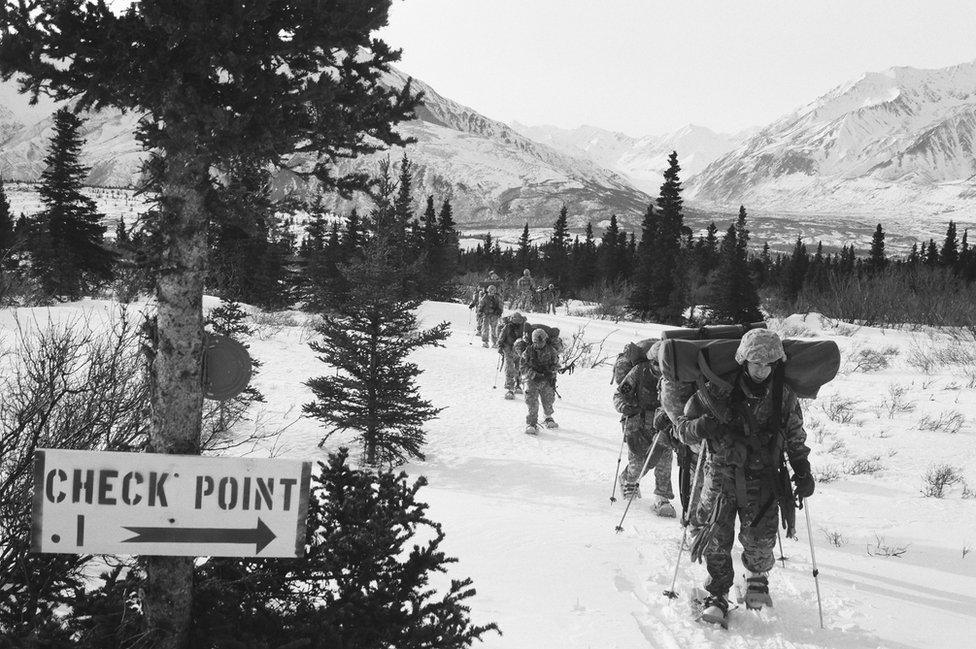
The Northern Warfare Training Center in Alaska is where soldiers in the US Army learn how to survive and fight in extreme cold weather. Photographer Ed Gold spent two weeks with the team, shadowing the students as they went on exercises.
The course takes a "train the trainer" approach, with soldiers who complete the training passing on their new skills to comrades when they return to their units.
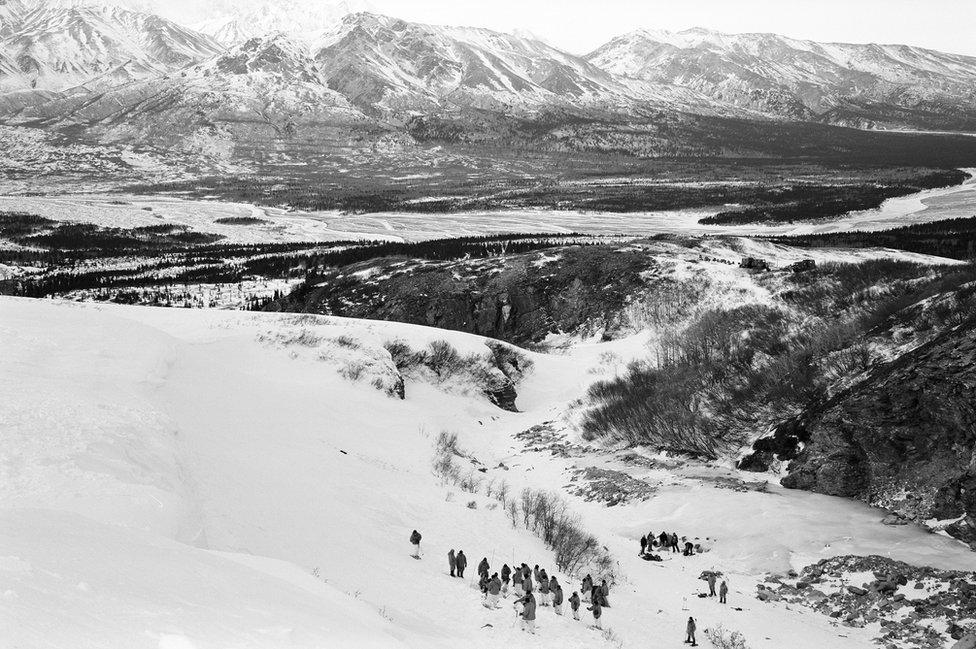
The Alaskan terrain provides a wide range of natural challenges and, at sub-zero temperatures, most tasks are more difficult and take longer.
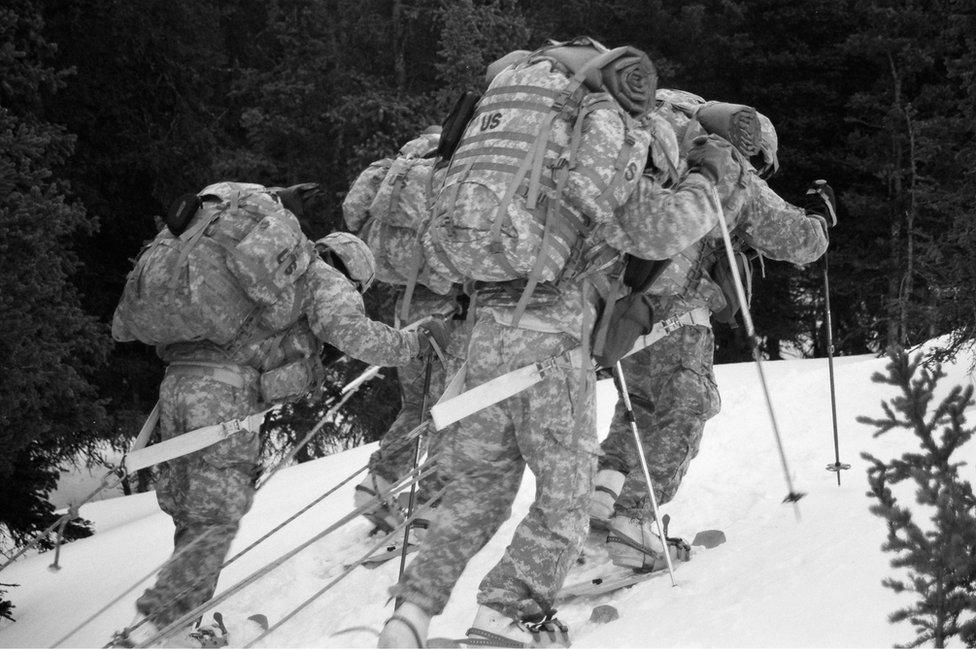
"We are not a tactics school; we get you ready to operate in cold weather," says Lt Col Mick Braun.
"A lot of it is mental toughness. It builds a soldier's toughness so they know they can operate in cold conditions. I'm a firm believer that if a soldier can serve here they can serve anywhere.
The centre also works with other countries whose militaries operate in cold conditions, such as Japan, the Scandinavian countries, Nepal and Mongolia, to build relationships and share knowledge.
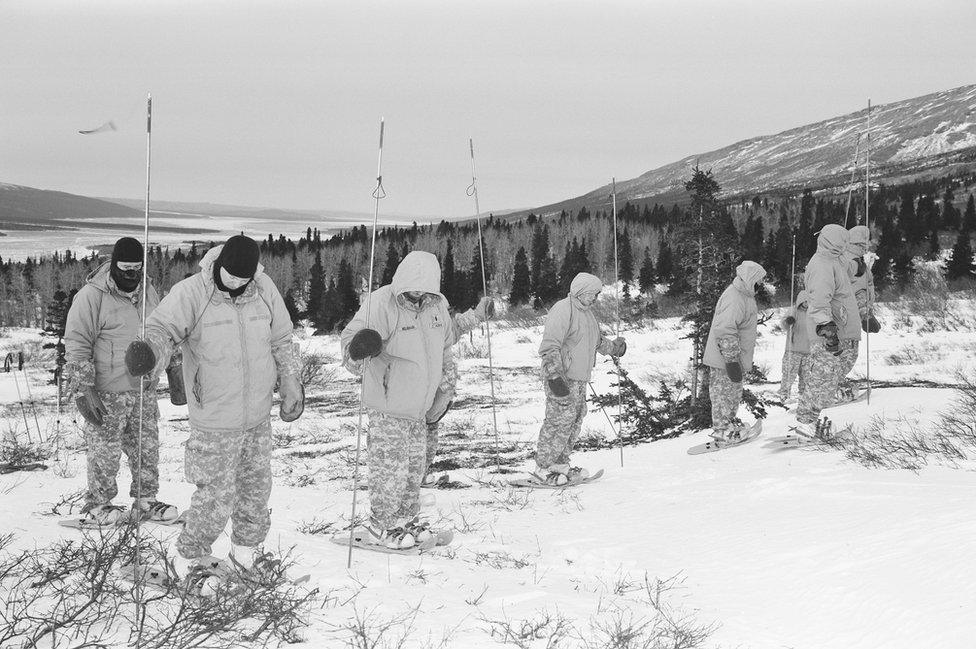
Part of the course involves learning how to survive avalanches. Soldiers are taught how to use poles to find those buried in the snow, having first picked up a signal using locator equipment.
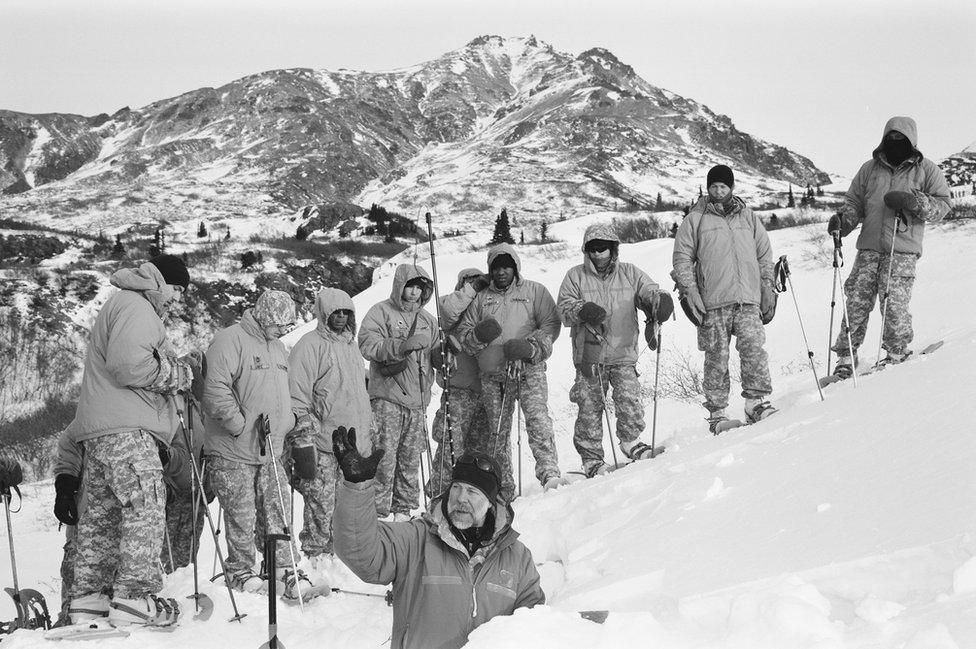
"This pit shows that it is important to see what the snow is doing. Look at the layers in the snow," says instructor Steven Decker.
"You can get some value out of this, it's a low consequence slope. If this slope was going to slide it wouldn't go very far as it has an inch and a half of 'depth hoar, external' slab."
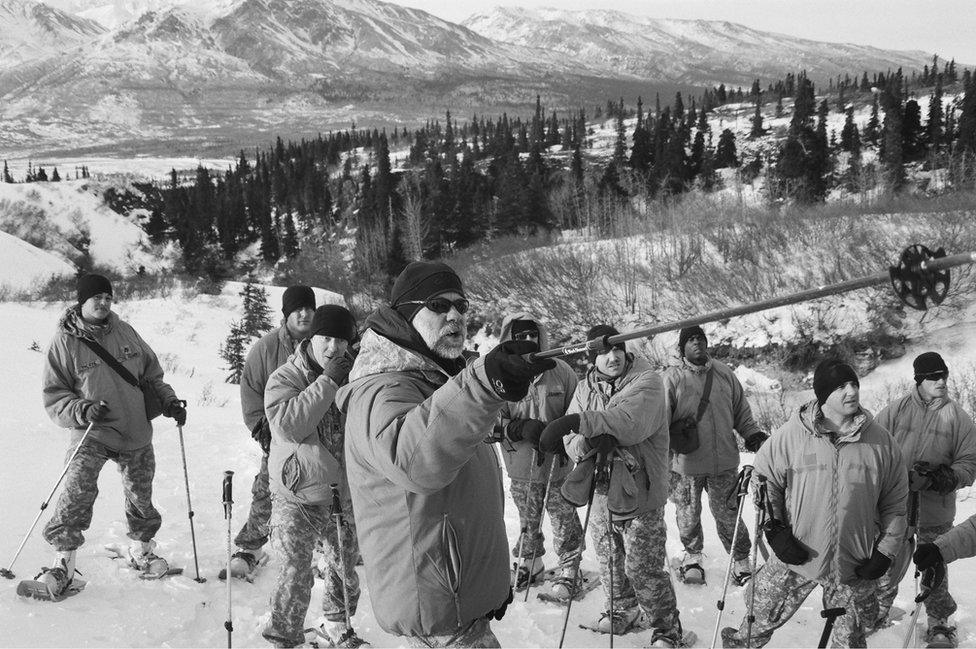
"Whenever you are in this environment stop every three or four hours or so and pay attention to your surroundings. Look up at the clouds to check what the weather is doing. What is the wind doing?"
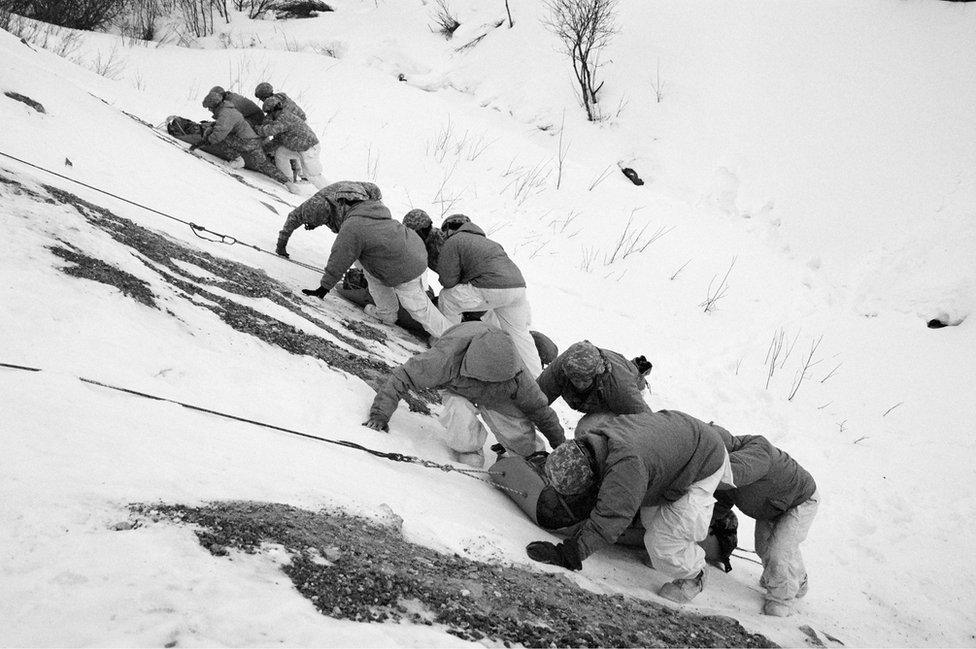
Decker notes that a lack of snow in this training area shows that the winter has been warmer than normal. Despite the absence of snow the slippery surface still makes the going tricky and tries the patience of soldiers as they practise casualty evacuation using a rescue stretcher.
The belayer further up the slope cannot be relied upon to pull up or lower the casualty on their own. They only brake the rope when the four man team below pause their effort.
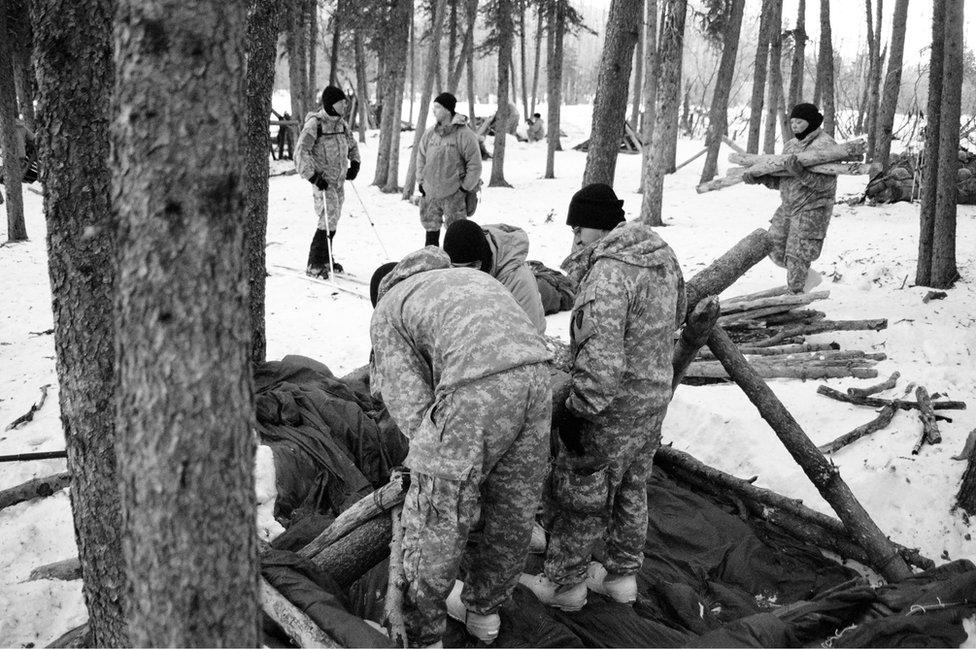

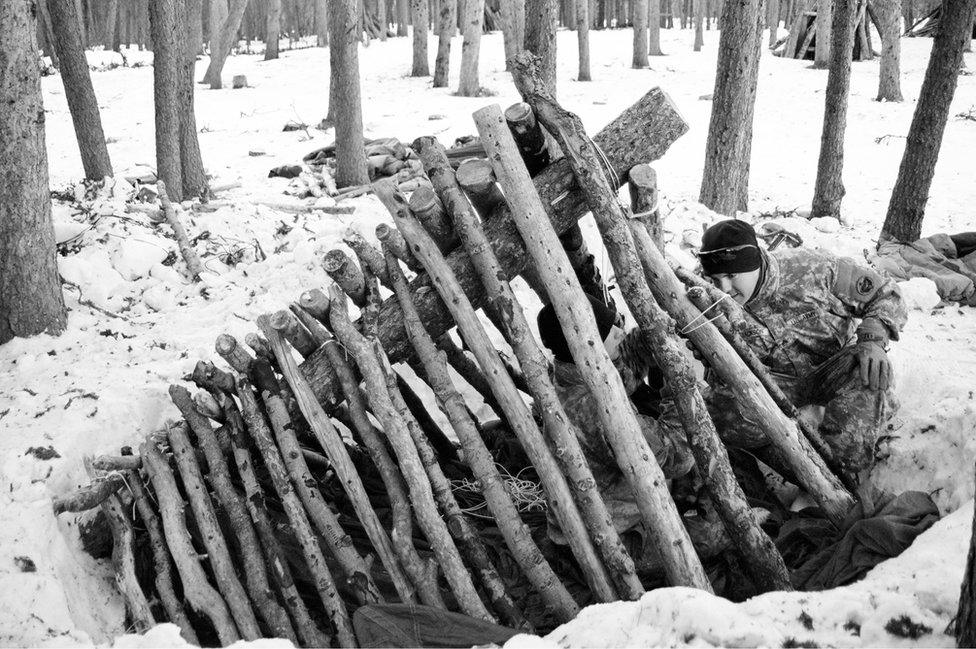
To keep warm overnight, trainees build a thermal shelter using wood and parachute cord.
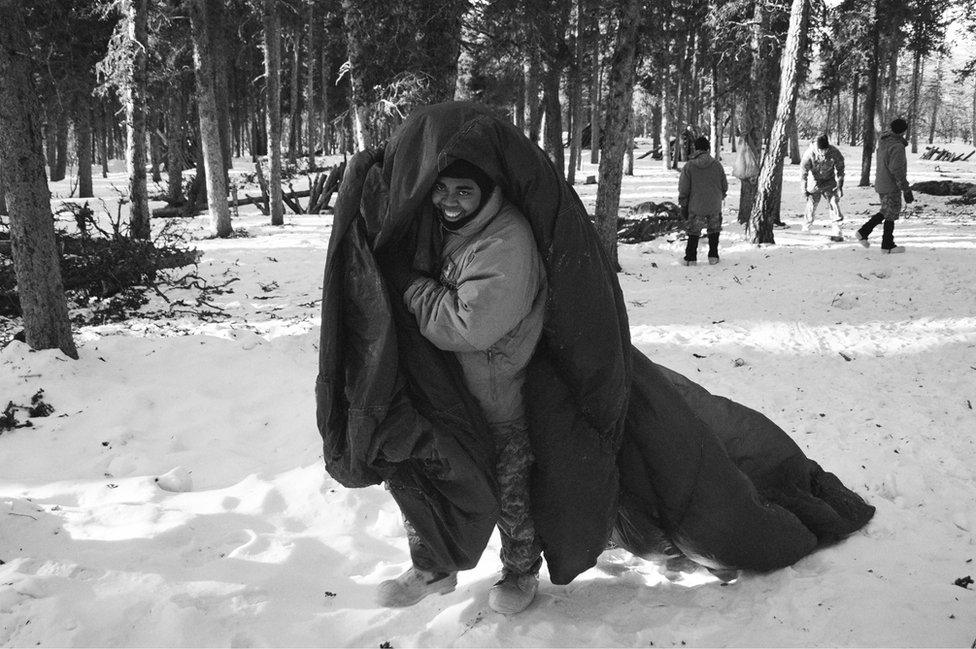
The shelter is then covered with a parachute and snow is piled on top. It provides a warm sleeping area, protected from the wind.
The soldiers are shown how to make the improvised thermal shelter and then given three hours to build their own to share with one or two others. They then spend a night in it, dismantling it early the following morning.
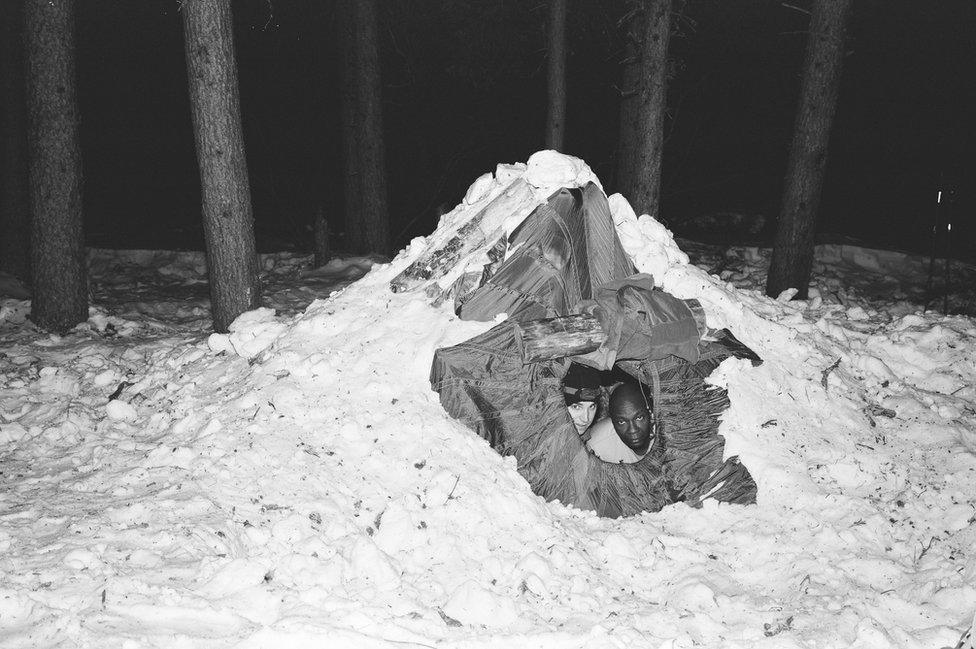
"It's my first winter in Alaska so getting this class really opens my mind," says Staff Sgt Ali Baharanyi (right) who was born in Congo and joined the US Army in 2010.
"Most of the time you really don't know how to use the gear to its maximum so we don't always benefit entirely but now with this training I'm going to maximise my understanding and involvement with Alaska."
Students are also told how to use packed snow to stop bullets. About two metres (6,5ft) of packed snow will stop a 7.62mm bullet, but if the snow is freshly fallen and looser, the width must be doubled.
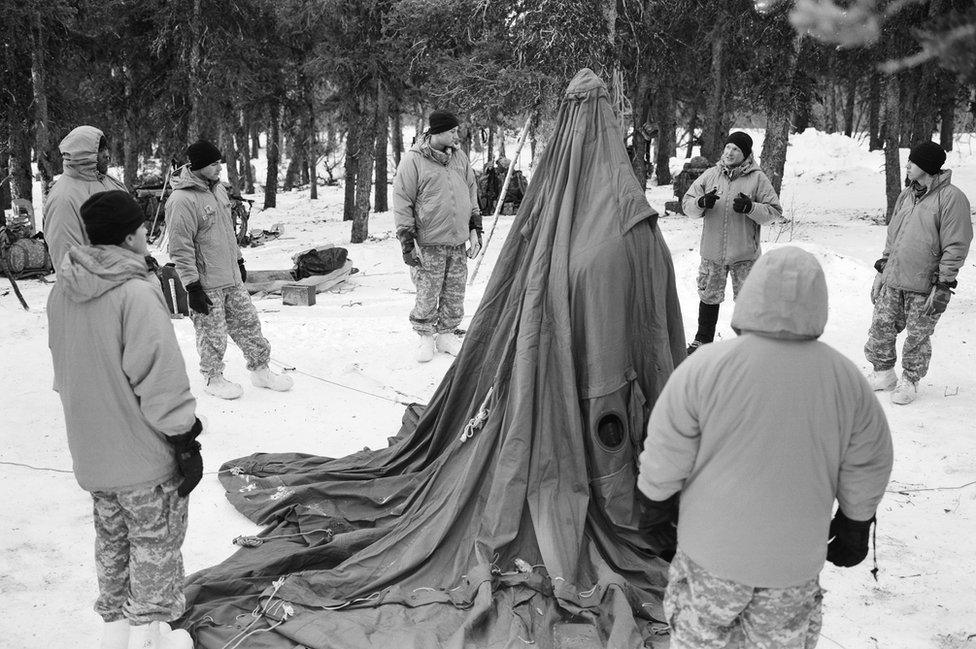
"We train for sustained operations in an arctic environment," says Staff Sgt Ben Kueter (speaking, right).
"I'm confident that we give soldiers a very good knowledge base and that they would be able to operate in any cold region in the world. This Arctic area is brutal and it takes specialised training to be able to survive out here."
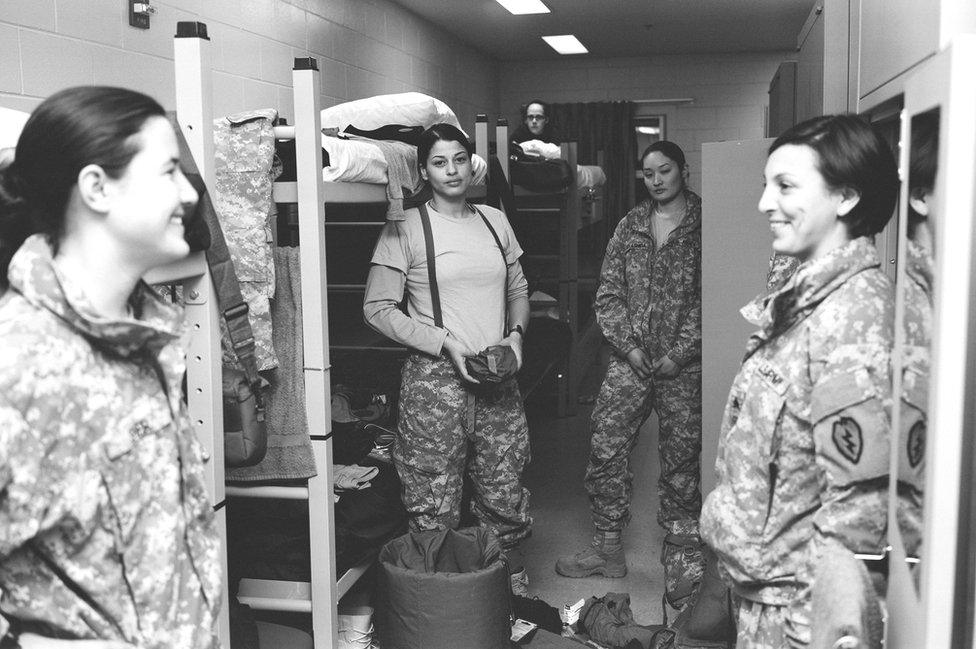
"I want soldiers to thrive in the wild," says 2nd Lt Jessica Hayashida (second from right), a student on the course.
"What builds a team more than enduring some awful pain together. We have a really great mentality about it. I think the instructors are incredible. Not only are they proficient and confident but they have a genuine passion."
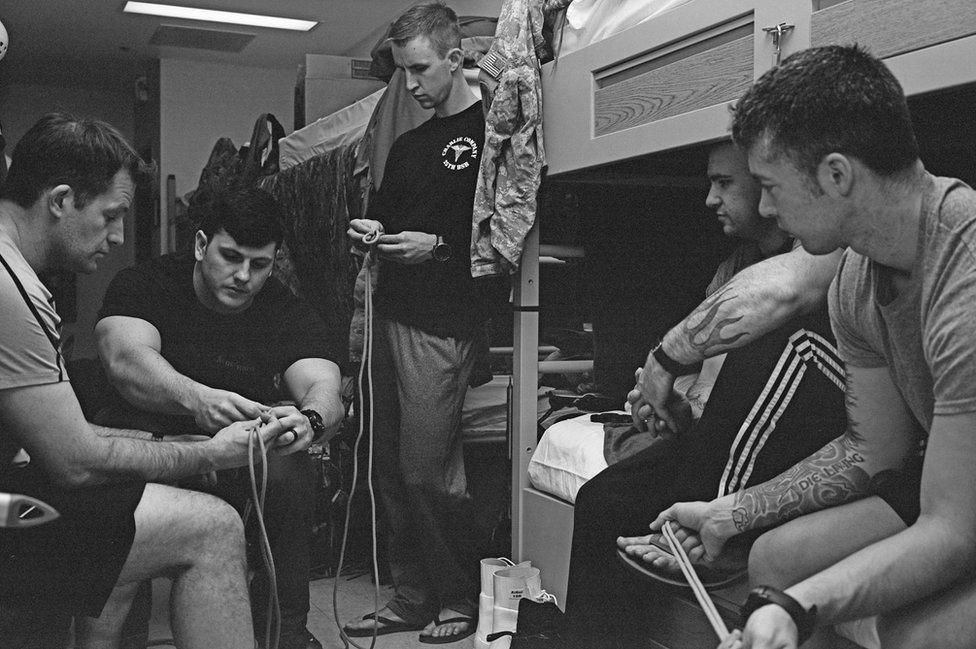
Lt Ryan Morrill, Sgt Thomas Trask, Lt Zachary Schroeder, Staff Sgt Noe Saldana and Capt Dave Luce are part of a team training to climb Denali, formerly known as Mt McKinley, the highest peak in North America. Four of the five will be selected to make the ascent in May.
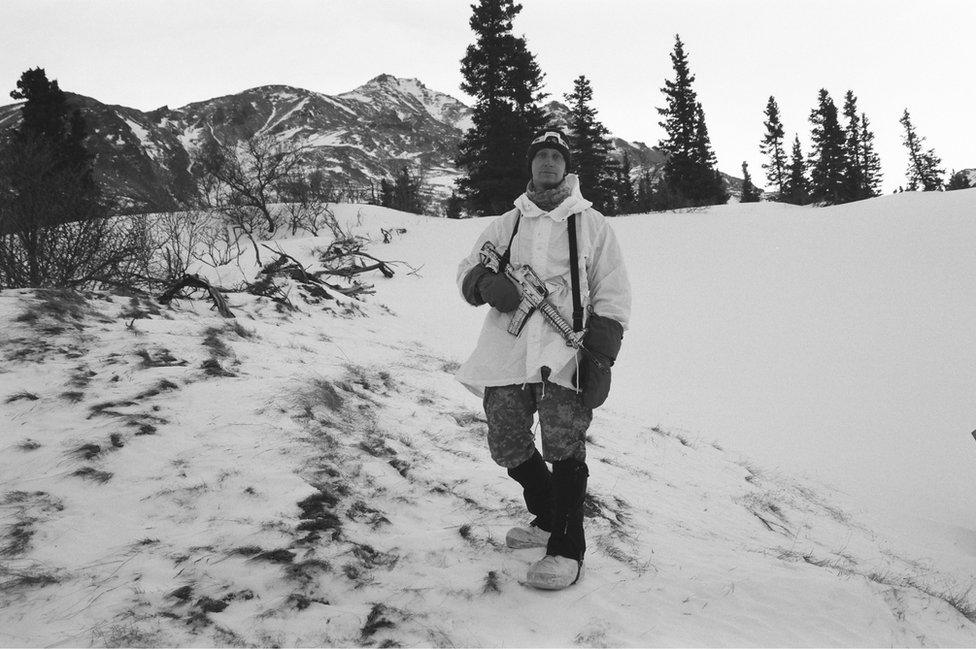
Sgt Bell demonstrates how to use camouflage, wearing an "overwhite" top when the elevated mountainside has snow and the ground is bare.
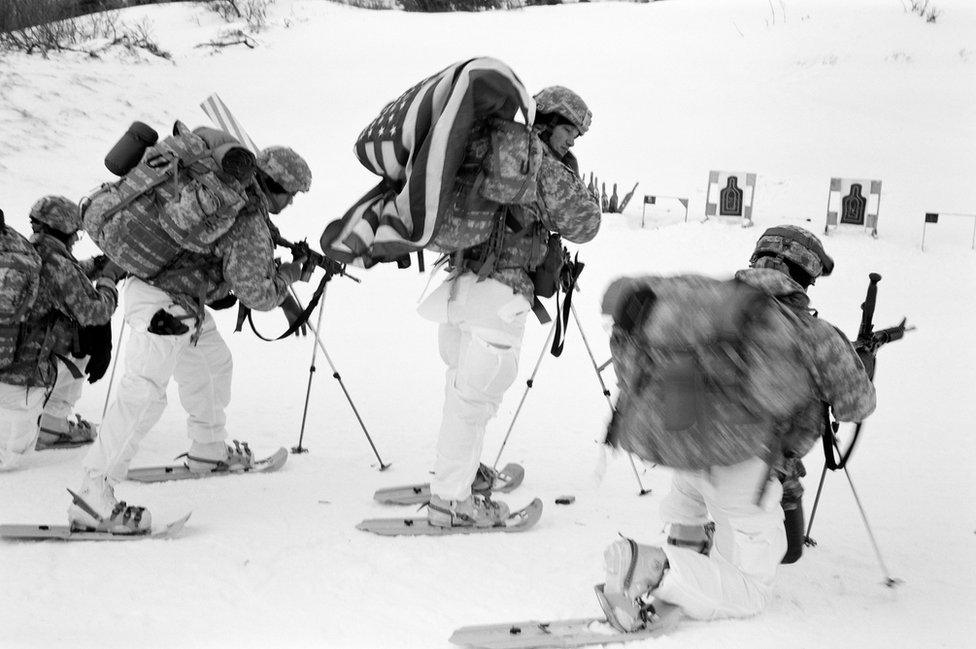
Sgt Joshua Vermote carries the Stars and Stripes on his pack.
"I just got this flag last year - it's flown in Germany, Ireland, Kyrgyzstan, Afghanistan, and it's been through pretty much half the United States," says Vermote.
"I put it on my rucksack to boost morale for everybody as I knew it was going to be a physical endeavour for everybody and I believe that when any American sees that flag it boosts morale."
"Everything on this course is designed for a reason - we had to adapt and overcome and deal with it. I'm deploying to Kuwait and after that I'm hoping to come back here to work as an instructor. I love the cold, born and raised in it. I strongly dislike the heat."
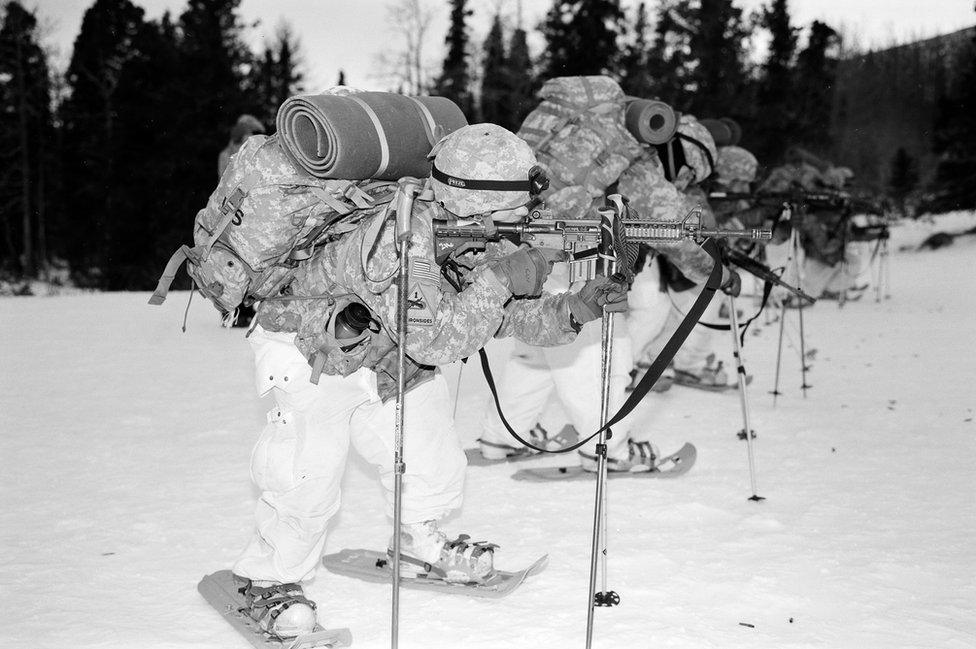
The squads were timed around a 5km (3 mile) course using snow shoes and carrying their equipment. They were then marked on their collective scores on a 25m (80ft) firing range using 20 rounds each in their M4 Carbine Assault Rifles.
Two fighting positions were adopted, with 10 rounds fired in a crouching position and 10 kneeling, all the time wearing snow shoes.
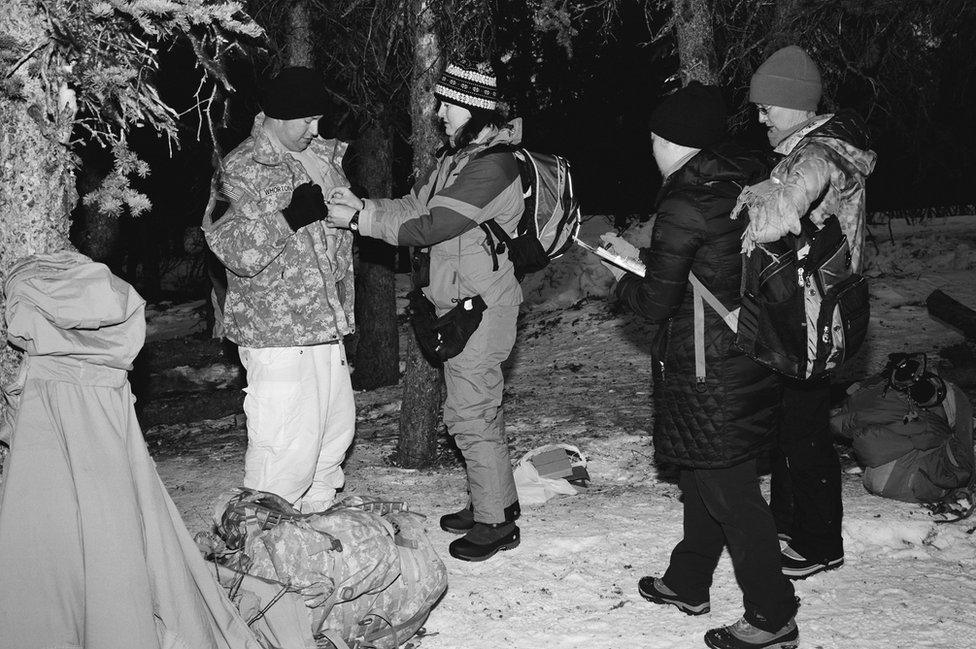
Kristine Isherwood (far right) is part of a team helping material developers and uniform designers understand the impact of the natural environment on combat clothing.
"You've got to get out from behind your desk and walk with the soldiers to understand what works and what doesn't," says Isherwood. "You will encounter things outdoors that you didn't consider in a lab environment."
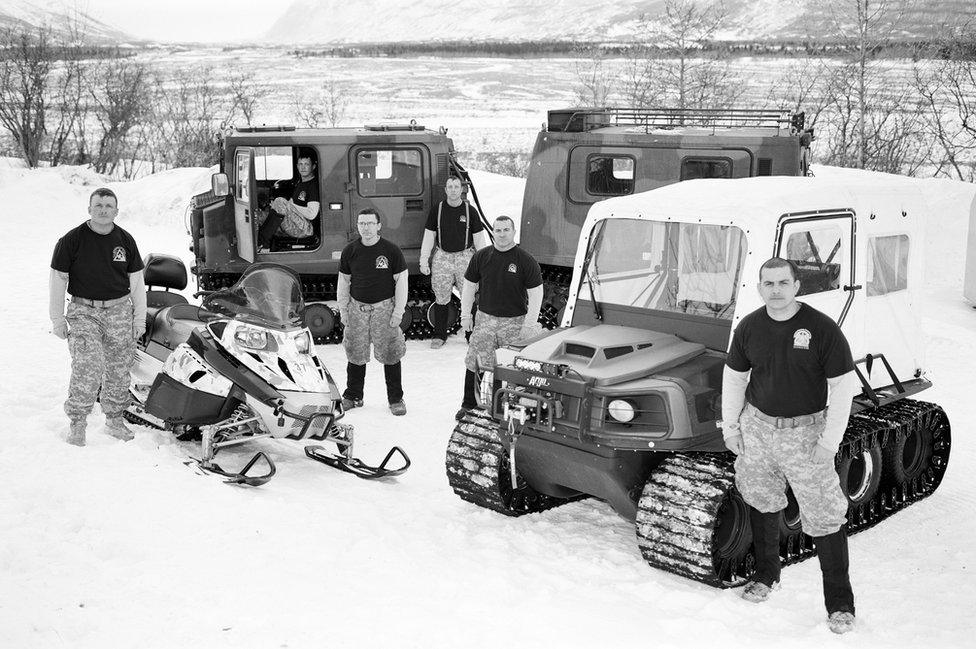
Staff Sgt Rinson Neth (right) is from Pohnpei in the Federated States of Micronesia.
"I was deployed to the mountains of Afghanistan and I wish I had been to this school beforehand.
"Having the knowledge means that we can get dropped anywhere in the world and we'll do well. If you don't have that knowledge it's going to be a bad day for you. I prefer the cold. With cold you can always upgrade but with heat you can't downgrade."
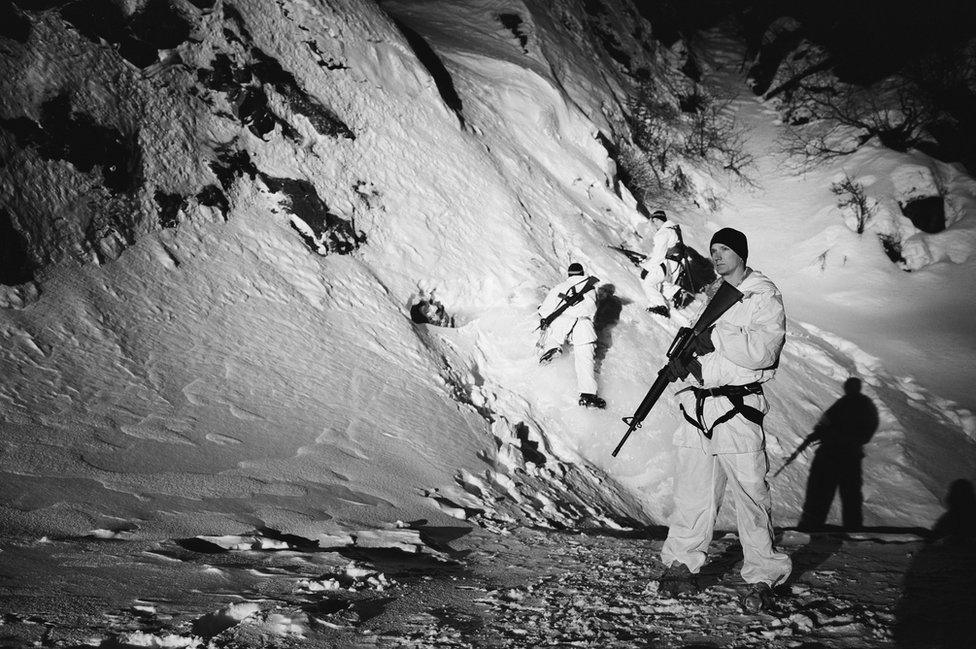
"We never know where we're going to go next, where we're going to fight. It's extremely valuable to train soldiers in being able to fight in mountainous regions," says Sgt First Class Adam McQuiston.
"The course definitely prepares for the mountains and the cold and sets up our soldiers for success in any Arctic environment.
"I have 20 instructors here right now, five medics and the lieutenant and myself," he says. "We're continually busy."
All photographs and interviews by Ed Gold.